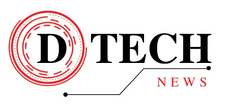# Discovering ‘Fabrice’: A Malicious PyPI Package Targeting Developers’ AWS Keys 🔑🐍
In the ever-evolving realm of cybersecurity, vigilance is paramount. Today, developers face a fresh threat: the malicious Python package, ‘Fabrice.’ This package, now identified as a risk to developers across the globe, has one sinister motive—to seize AWS keys, thereby compromising potentially thousands of developers’ sensitive data.
## The Rise of Supply Chain Attacks in Software Development 🚨
In recent years, supply chain attacks have climbed the hierarchy of cyber threats. Unlike traditional threats that attack systems directly, these sophisticated incursions exploit the credibility of trusted software conduits. One prime example is repositories such as the Python Package Index (PyPI), where malicious agents mask their malware amidst legitimate software libraries. It is within this trusted space that ‘Fabrice’ initially found its unsuspecting victims.
## The ‘Fabrice’ Package: A Wolf in Sheep’s Clothing 🐺
Cloaked as a benign utility, the ‘Fabrice’ package capitalized on its guise to silently infiltrate developer environments. Once installed, it embarked on its clandestine goal: targeting and extracting AWS credentials, weaving insidious operations into the fabric of digital workflows.
## Why AWS Keys? 🔐
AWS keys are critical components in the digital arena. Serving as gateways to Amazon Web Services, they enable access to a vast array of resources from cloud computing to secure data repositories. In unauthorized hands, these keys can lead to catastrophic consequences including data exposure, operational disruption, and significant financial damage. This makes them highly appealing targets for cybercriminals wielding the ‘Fabrice’ package.
## Recognizing and Mitigating the Threat ☂️
As the veil over the ‘Fabrice’ threat was lifted, a rapid response became crucial. Developers and IT professionals can thwart such attempts by implementing the following measures:
### **1. Regularly Audit Dependencies**
Monitoring your project’s dependencies is vital for security integrity. Utilize tools such as Dependabot and Snyk which can automate the auditing process and flag any suspicious behaviors within your libraries and packages.
### **2. Implement Multi-Factor Authentication (MFA)**
MFA is an essential practice for adding robust security layers. Significantly complicating unauthorized access, MFA ensures that stolen AWS keys alone do not suffice for exploitation.
### **3. Use Environment Variables for Sensitive Information**
Resorting to environment variables to manage sensitive data can avert the inadvertent exposure of crucial credentials. This practice not only simplifies credential management but also enhances overall security.
### **4. Stay Up-to-Date with Security Best Practices**
The landscape of cybersecurity is in constant flux. Regularly updating your knowledge bank with the latest security protocols ensures you maintain an edge over potential threats.
## The Road Ahead: Reinforcing Trust in Open Source 🤝
While the discovery of the ‘Fabrice’ package might erode trust in open-source ecosystems momentarily, it also underscores the incredible power of the community. The swift detection of the threat, followed by rapid dissemination of information, exemplifies the community’s ability to act as the first line of defense. It is crucial that developers actively engage in ongoing security dialogues, exchange insights, and fortify the digital tools that the industry relies on so heavily.
In closing, the uncovering of the ‘Fabrice’ package serves as a potent reminder of the vulnerabilities lurking within. However, it simultaneously accentuates the exigency of vigilance and collective action. By fostering awareness and remaining proactive against these shifting threats, the integrity and security of our digital projects can be steadfastly maintained.
## Have Your Say! 💬
What strategies do you employ to secure your code against malicious threats? Share your thoughts and practices in the comments section below. Let’s cultivate a culture of cybersecurity awareness within the developer ecosystem!
—
Stay cautious, stay informed, and continue to navigate the limitless potential of code with an unwavering eye on the security of your toolchain and projects.




















































